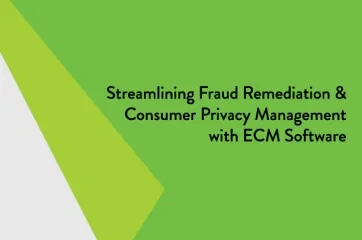What are Loan Exceptions?
Financial institutions encounter loan exceptions when documentation is expected to be in the loan file but is missing. Past-due tasks can also be considered loan exceptions, such as when an employee forgets to order an appraisal or fails to take action on a UCC filing. However, in many cases, such tasks relate to the collection of missing or expired documentation.
Proactive exception management is particularly important for banks and credit unions with large commercial loan portfolios, due to the volume of documentation requirements. Resolving loan exceptions in a timely manner is key for protecting the financial institution from unnecessary risk, especially in the event of a default situation.
Loan Exception Examples
Generally speaking, loan exceptions can be organized into three groups based on when they occur during the life of the loan.
- Pre-closing loan exceptions involve documentation that is required for closing to occur. For example, lending institutions need a clear understanding of pledged collateral prior to making loans. Perfecting untitled, non-possessory collateral is considerably different than perfecting real estate or titled collateral. Collateral type dictates the documentation that is needed to perfect it, which is why a bank or credit union’s pre-closing exception management workflow may vary based on the pledged asset.
- Post-closing loan exceptions typically pertain to the collection of trailing documents, such as recorded deeds of trust and title policies. Such documents may not be present at the moment of closing but are usually available within a reasonable amount of time. Someone at the bank or credit union must remember to follow up and ensure such documentation is in the file to avoid exceptions.
- Ongoing loan exceptions involve documentation that must be collected on a recurring basis, such as proof of insurance for a piece of property used as collateral. Financial institutions have a direct interest to ensure that assets used as collateral are properly protected against fires, floods, and other natural disasters.
Loan Exceptions vs. Credit Exceptions
Inventory lists, equipment lists, accounts receivable statements, and other forms of documentation can sometimes be used to satisfy both loan and credit exceptions. For example, a commercial credit team may rely on a customer’s accounts receivable statement to analyze creditworthiness. However, a commercial lending team may also need the same statement if accounts receivable is pledged as collateral for a loan. In short, this document helps the financial institution understand the customer’s financial situation while also affecting collateral value. With the right tracking processes and systems, collecting and storing this document could resolve two exceptions with a single upload or drag and drop.
Avoiding and Tracking Loan Exceptions
Document preparation systems have become important tools used by financial institutions to ensure each loan is properly documented. That said, there are still many documents—such as trailing documents and UCC continuations—that require ongoing tracking, reporting, and action. Spreadsheets and core-provided tickler systems are commonly used by banks and credit unions. Alternatively, some financial institutions prefer a system like AccuAccount, which offers advanced loan exception management capabilities.
Additional Exception Management Resources
Visit Alogent’s Innovation Hub to browse our library of on-demand videos, infographics, industry papers, and much more. We’ve published dozens of resources about exception management, including many definitions.














